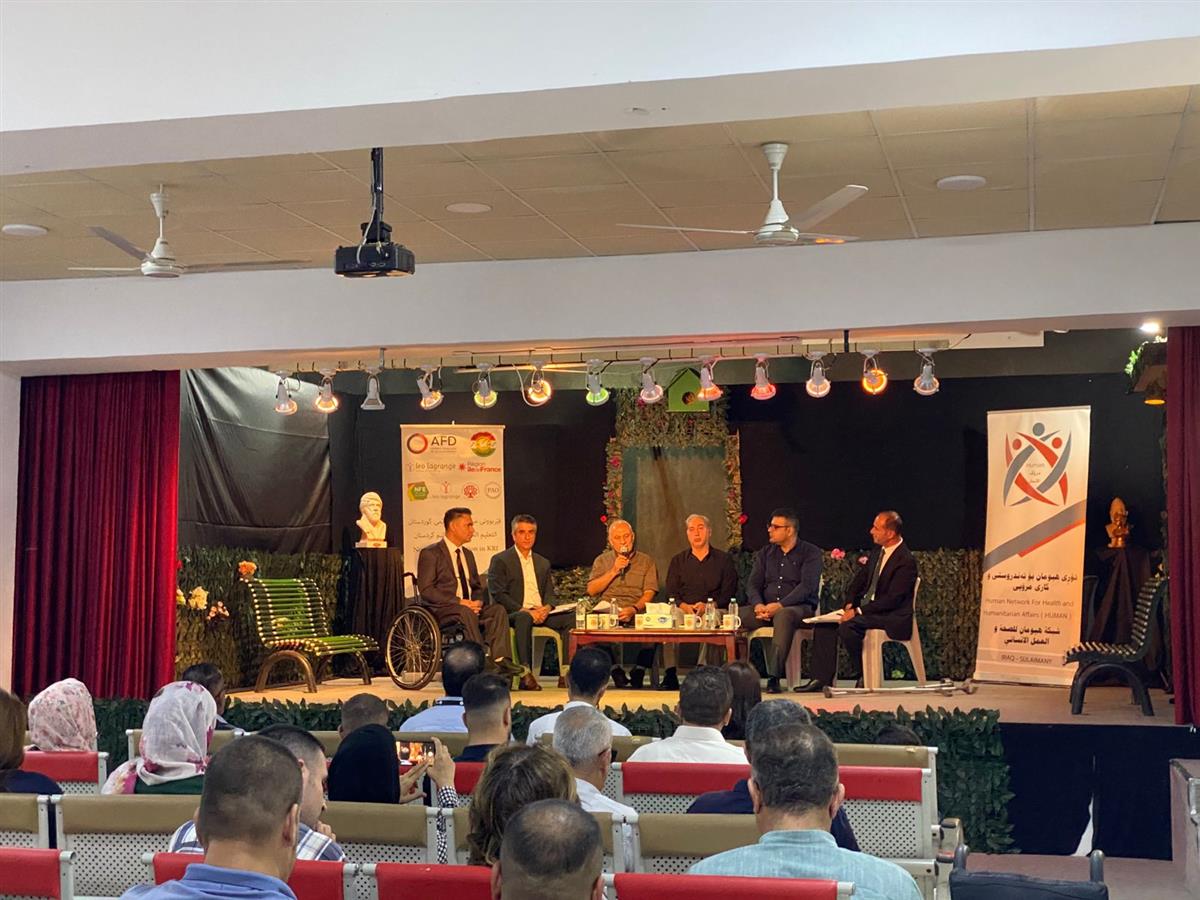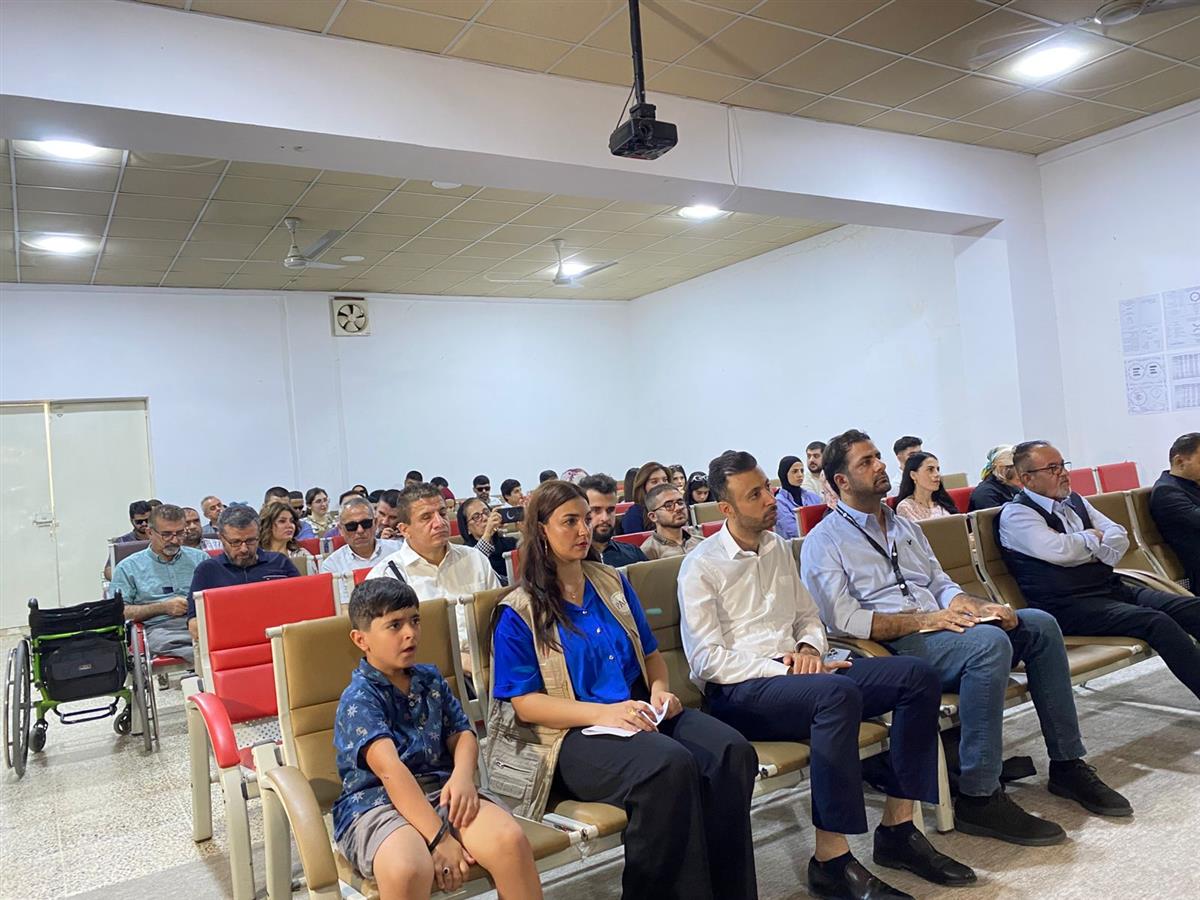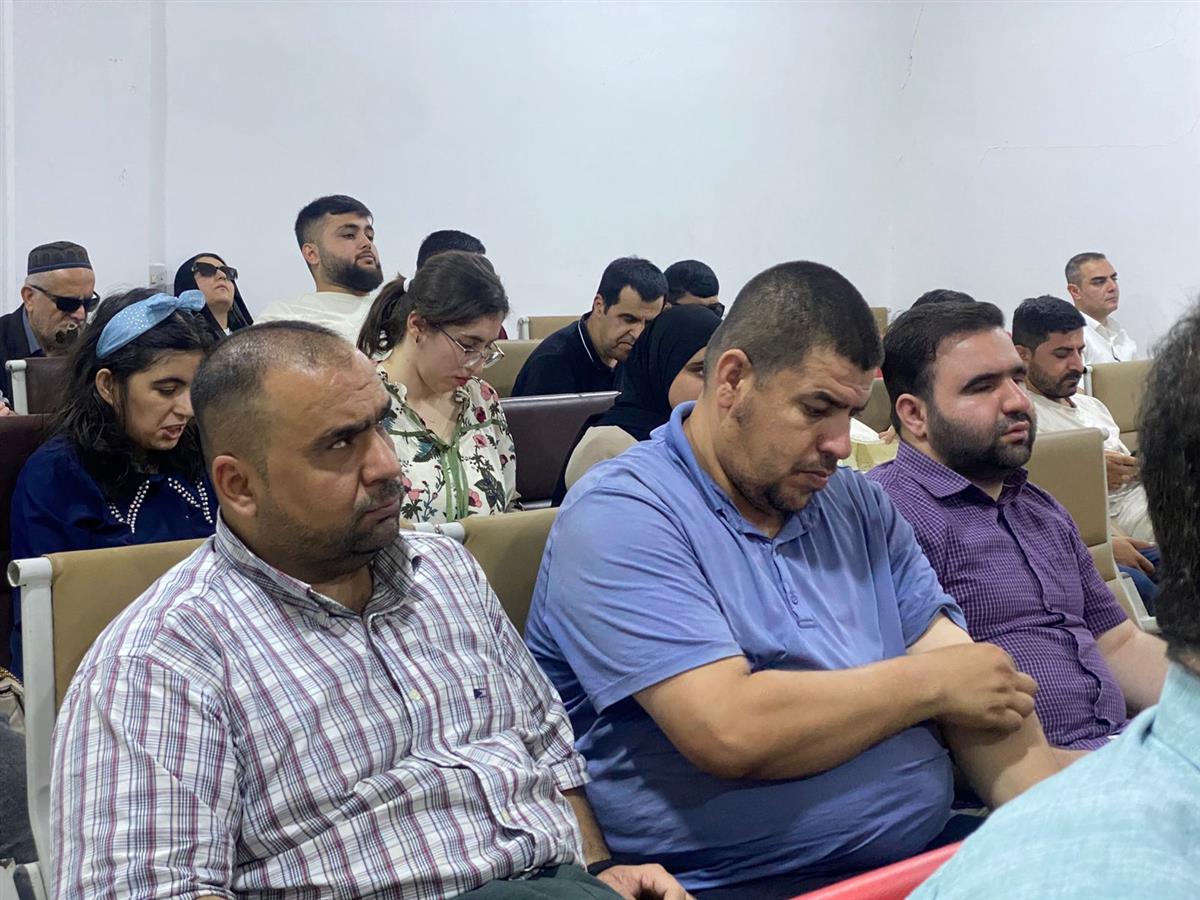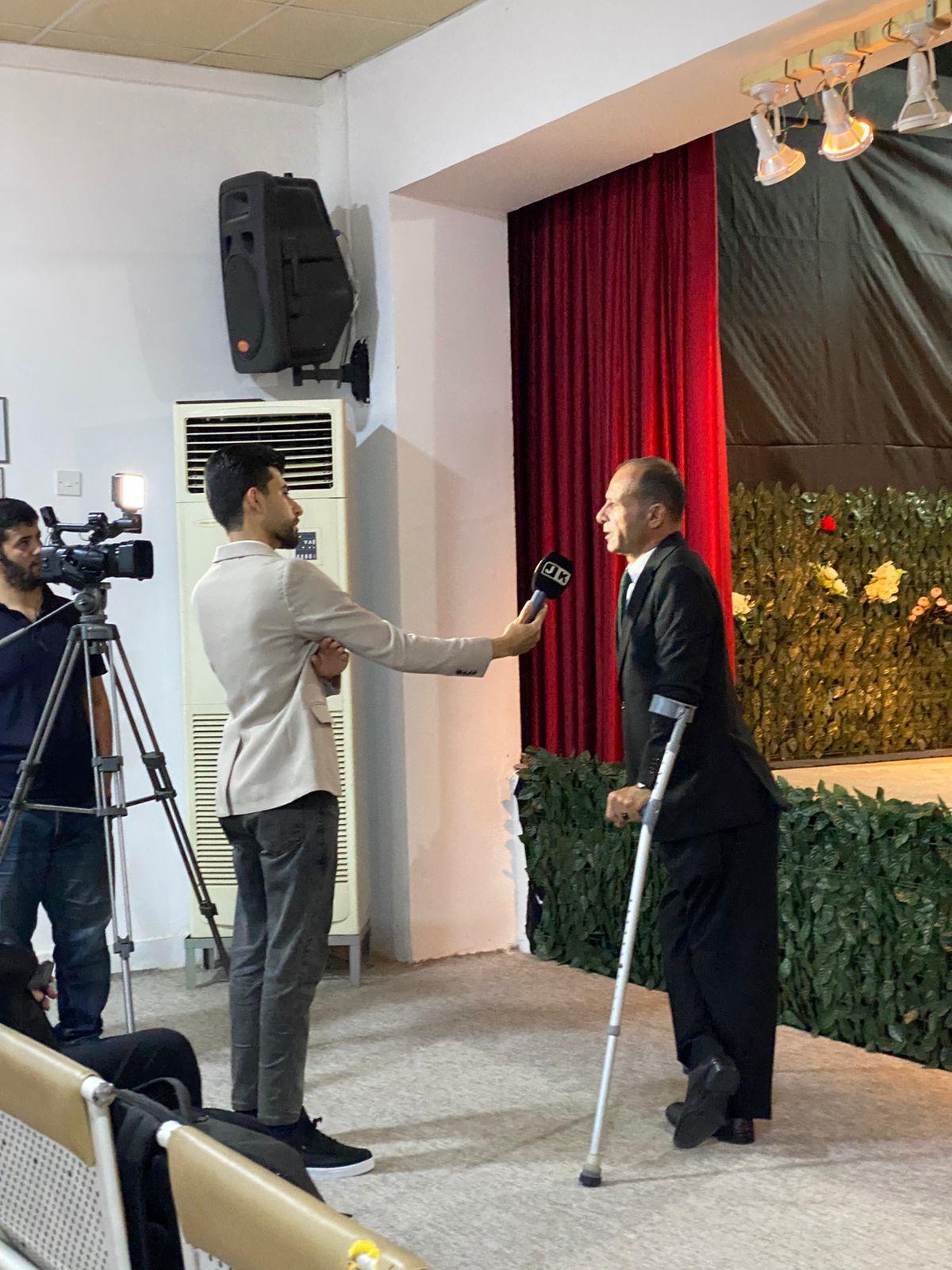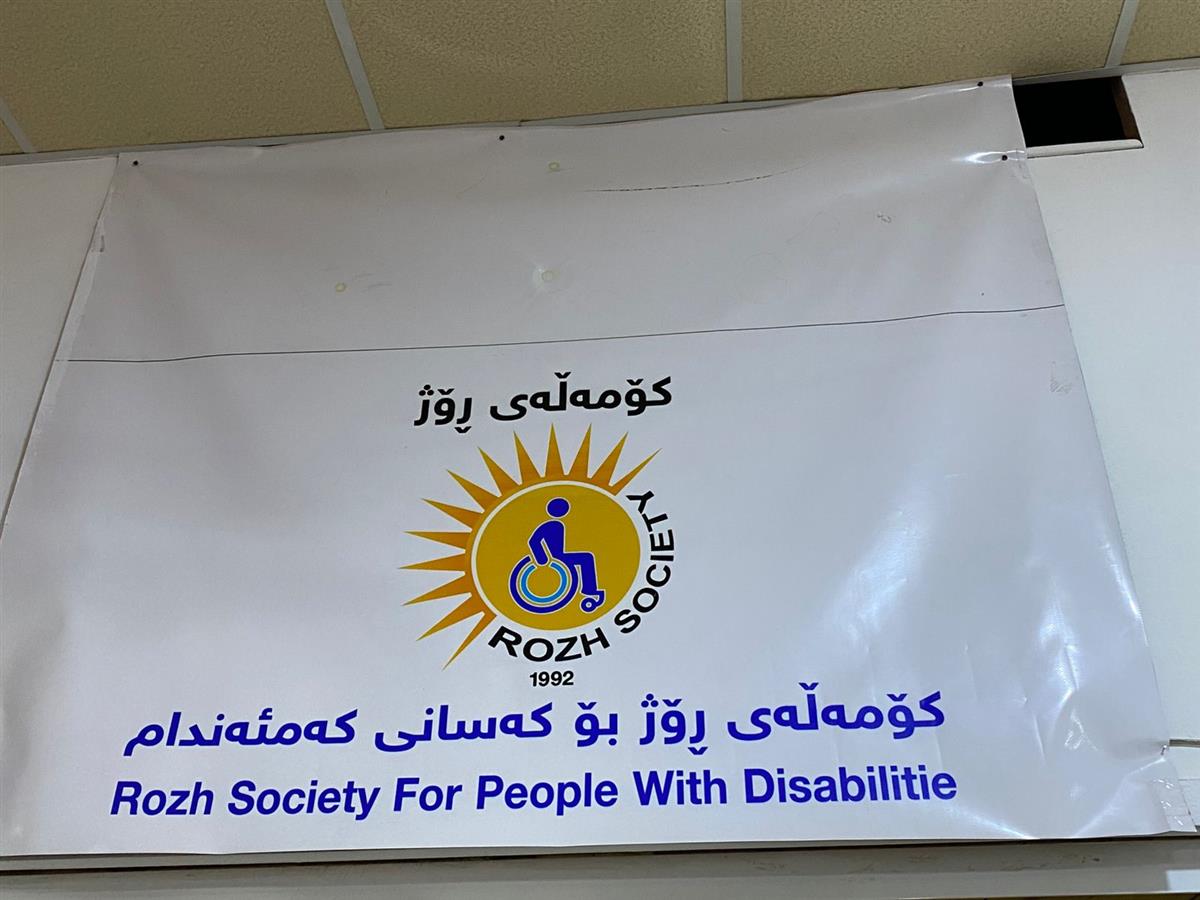Creating a Healthy Environment for Persons with Disabilities
2025-08-09
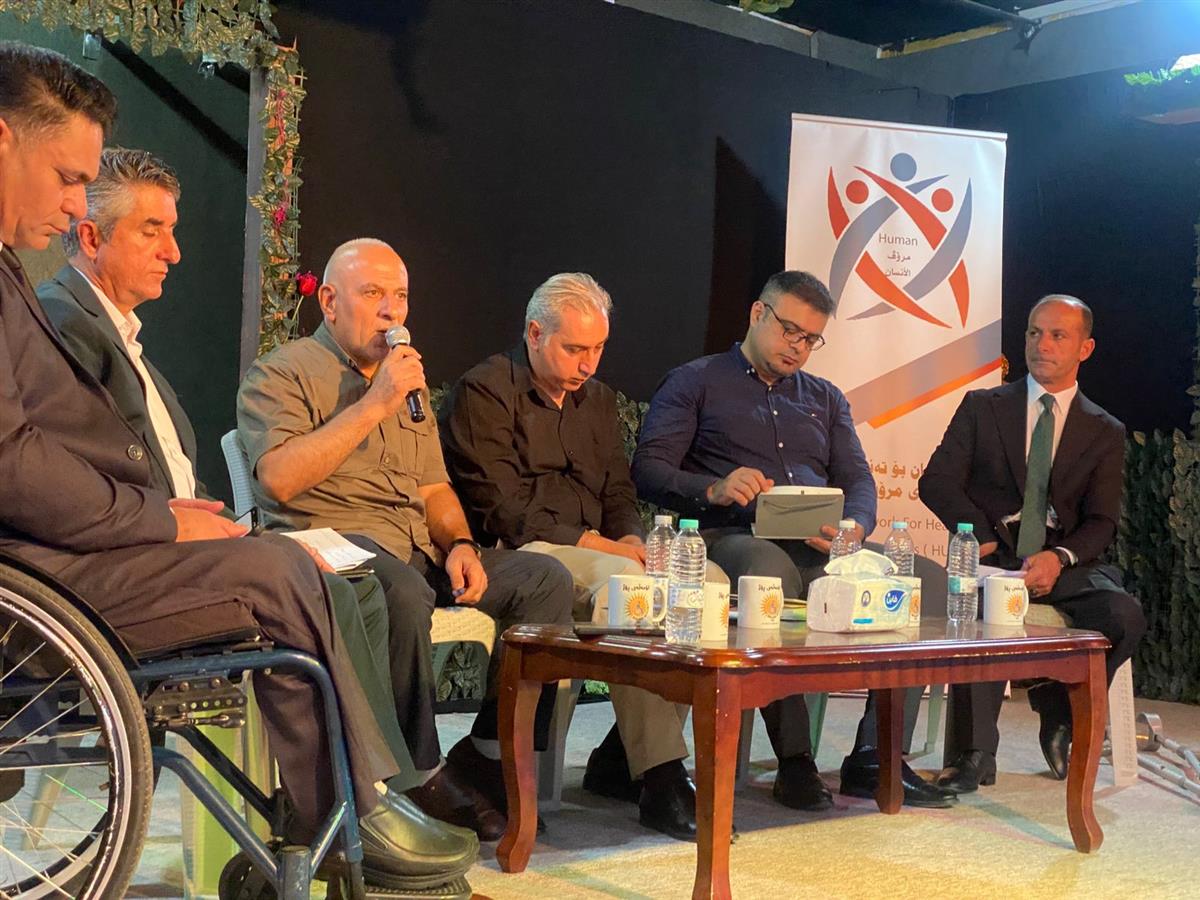
Human Network for Health and Humanitarian Work
Creating a Healthy Environment for Persons with Disabilities
Date: 23 July 2025
Location: Sulaymaniyah
Introduction
In line with its commitment to promoting the rights of persons with disabilities and fostering a healthy, inclusive environment for all, the Human Network for Health and Humanitarian Work organized a discussion session entitled “Creating a Healthy Environment for Persons with Disabilities” in Sulaymaniyah on 23 July 2025.
The event brought together 68 participants, including representatives of civil society organizations, persons with disabilities, and officials from governmental, health, and educational institutions. The session served as a platform for exchanging insights, identifying challenges, and exploring practical solutions to enhance inclusion and accessibility.
Key Discussion Points
1. Health Challenges
Limited availability of healthcare services tailored to persons with disabilities.
Shortage of professionals trained to address special needs.
Lack of specialized rehabilitation centers in several regions.
2. Infrastructure Gaps
Barriers in accessing public buildings and facilities due to the absence of inclusive design standards.
Inadequate accessible transportation options.
Lack of guidance and signage in Braille or other accessible formats.
3. Education and Employment
Insufficient academic and technical support for students with disabilities.
Limited and often unsuitable employment opportunities.
Low workplace awareness on inclusive practices and positive engagement.
Recommendations and Proposed Solutions
Participants identified a set of priority actions to address these challenges:
Legislative Reform: Enact and enforce laws safeguarding the rights of persons with disabilities in health, education, and employment.
Capacity Building: Provide specialized training for medical, educational, and service providers to effectively respond to diverse needs.
Infrastructure Improvement: Ensure public facilities, transportation systems, and urban spaces are designed to be fully accessible and safe.
Awareness Campaigns: Promote societal acceptance and understanding through targeted outreach and media engagement.
Economic Empowerment: Support small business initiatives and vocational rehabilitation programs for persons with disabilities.
Conclusion
The session concluded with a strong consensus on the need for continued dialogue and multi-sector collaboration. Participants affirmed that building an inclusive, safe, and healthy environment—one that guarantees dignity, independence, and equal opportunities for persons with disabilities—is essential to fostering their active participation in all aspects of community life.
